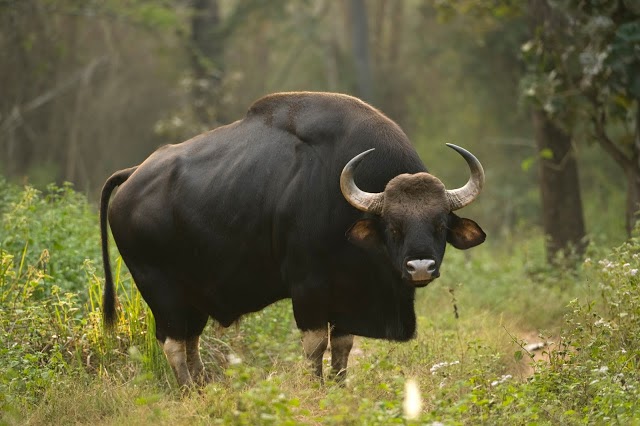Estimation Exercise of Indian Gaur in Nilgiris | 12 Jun 2020
Why in News
Recently, the first population estimation exercise of the Indian Gaur (Bison) was carried out in the Nilgiris Forest Division, Tamil Nadu.
- World Wide Fund for Nature India assisted the exercise and highlighted that there are estimated 2,000 Indian gaurs across the division.
Key Points
- It has been revealed that the majority of the animals in conflict-prone areas in the division live dangerously close to human habitations due to their habitat loss and fragmentation, exacerbating the probability of having problematic interactions with humans.
- Due to easy availability of food and lack of threat from predators, gaurs prefer to inhabit tea estates and human settlements.
- The spread of invasive species of plants in reserve forest have further degraded the Gaur’s natural habitat.
- The changing land-use patterns like converting tea estates into resorts and buildings has led to erection of more fences limiting the traditional pathways used by the gaurs to move between habitats.
- In areas except for Nilgiri Forest Division, there are sizable populations of gaurs but interactions with humans were comparatively less due to native forests being largely free of invasive flora and land-use patterns also remaining relatively stable.
Indian Gaur
- The Indian Gaur or Bison (Bos gaurus) is the largest and the tallest in the family of wild cattle and is a grazing animal.
- Threats:
- Food Scarcity:
- The destruction in the grasslands has led to the decline in availability of food for these animals.
- Due to the planting of commercially important trees, the lush grassland has diminished which is the prime source of fodder for this wild cattle.
- They have to fight for their food due to indiscriminate grazing of domestic animals in the areas.
- Poaching:
- The illegal hunting of the Indian bison is done for their commercial value as well as due to the high demand of gaur meat in the illegal market of India-Nepal border.
- Food Scarcity:
- Conservation:
- IUCN Red List: Vulnerable.
- Wild Life Protection Act, 1972: Schedule I.
- Nowadays, this animal is kept well and protected in some of the famous national parks of India like Nagarhole, Bandipur, Kabini and Masinagudi (Mudumalai).
World Wide Fund for Nature India
- It was established as a charitable trust on 27th November, 1969 and today it is one of the leading conservation organizations in the country.
- In 1987, it changed its name from the World Wildlife Fund to World Wide Fund for Nature India.
- It is a science-based organization which addresses issues such as the conservation of species and its habitats, climate change, water and environmental education, among many others.
- Mission Statement: To stop the degradation of the planet’s natural environment and build a future in which humans live in harmony with nature, by:
- Conserving the world's biological diversity.
- Ensuring that the use of renewable natural resources is sustainable.
- Promoting the reduction of pollution and wasteful consumption.

